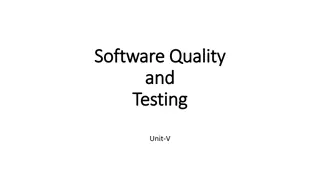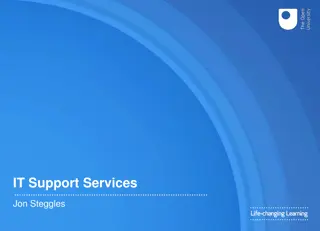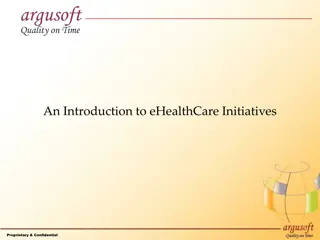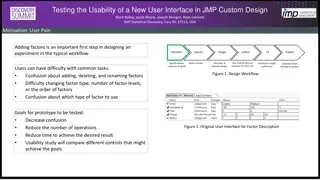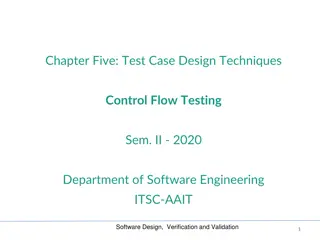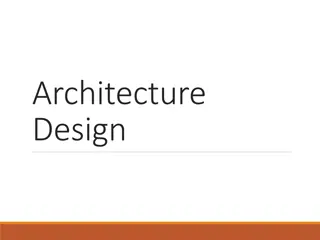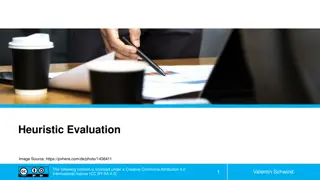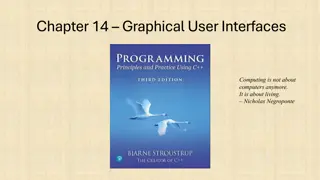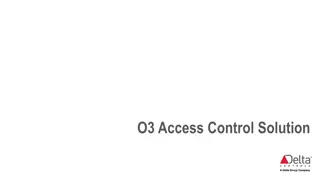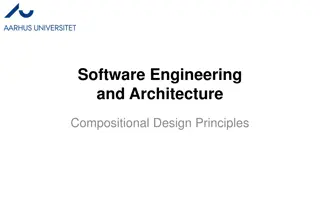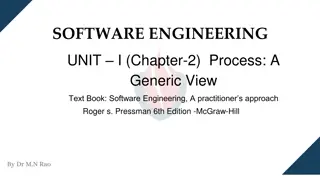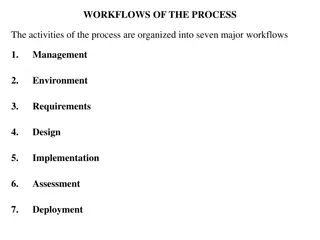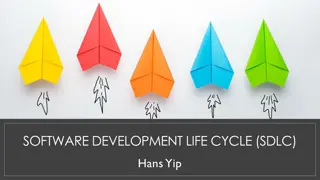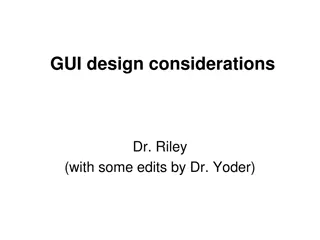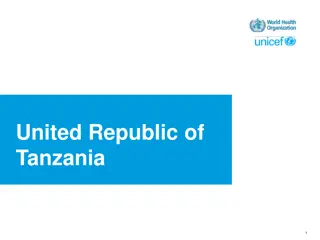Revolutionizing Healthcare Software Design and User Control
Moonshot to revolutionize healthcare software design, making it safe, easy to use, and adaptable. The approach involves modular platform control for users, inspired by NASA's mission control software. The MedWISER model aims for clinician-driven, composable architecture in healthcare systems. Focus on user acceptance, safety, and rapid adaptation to changing needs. Exploration of computable phenotypes for long Covid understanding and advancing informatics into care. Complex data visualization aids in understanding clinical conditions like NAFLD, primary care, and Covid in ED settings.
Download Presentation

Please find below an Image/Link to download the presentation.
The content on the website is provided AS IS for your information and personal use only. It may not be sold, licensed, or shared on other websites without obtaining consent from the author. Download presentation by click this link. If you encounter any issues during the download, it is possible that the publisher has removed the file from their server.
E N D
Presentation Transcript
Yalini Senathirajah, PhD yalini@pitt.edu 347-619-4021 Moonshot Revolutionize the design & use of healthcare software, making it safe, easy to use, fit to task, and adaptive to change. Perhaps by giving control to the user, via a modular/composable platform Not for decoration. NASA uses a similar approach in their mission control software. http://www.ehrlab.org https://scholar.google.com/citations?hl=en&user=j3lK3ygAAAAJ
MedWISER* model for healthcare systems Modular and user-composable architecture clinician control and sharing Several potential advantages at individual HCI and macro system level: fit to task, clinician cognitive support Communication/collaboration, influence transmission HCI address display fragmentation problem, others, specific safety/interaction design Visualization, incorporation of multiple data sources Rapid changeability, creation of new tools (e.g. during epidemics, new Tx) New mode of software creation; implications for reliability, security Clinician acceptance Built and tested system; (AHRQ-funded, R01HS023708) Work on hold pending external collaborations due to UPMC Epic install *Medical Widget-based Information Sharing Environment Navigation in the electronic health record: a review of the safety and usability literature. LC Roman, JS Ancker, SB Johnson, Y Senathirajah. Journal of biomedical informatics 67, 69-79 54 2017 The clinician in the driver s seat: part 1 a drag/drop user-composable electronic health record platform. Y Senathirajah, S Bakken, D Kaufman. Journal of biomedical informatics 52, 165-176 Safer design - Composable EHRs and Mechanisms for Safety. Senathirajah Y. (2015). Borycki EM, et al., eds., IOS Press. Stud Health Technol Inform 2015:218:40602. PMID:26262532
RECOVER understanding long Covid Computable phenotypes for several conditions Representativeness of data are our definitions accurate? Possible work comparing RECOVER phenotypes with frequencies in non-RECOVER populations Policy implications
Efferent informatics* - getting advances into care Most current informatics analyzes data, makes algorithms, then ? Can take $100K + years to get into use, if ever $4.2B spent on health AI devt algorithms, little in deployment learning health system the efferent arm
Complex clinical data visualization for clinicians NAFLD, primary care, Covid, ED NAFLD clinic (Jay Behari) 5 related comorbidities, complex data must be visualized for Clinician understanding Patient communication ?Emergency medicine MedWISER + process mining improved ED workflow + Hx Dx safety? Specialized user-configurable visualizations permit at-a- glance data appraisal of complex conditions
Tools for the rest of us Worked in both high resource academic medical centers (Columbia, Northwell, UPMC) and low-resource (Downstate, Harlem) Government ignores challenges within low-resource settings with respect to tech demands (e.g. interoperability mandate) COVID-19: underserved areas hit particularly hard, and health systems could benefit from various HIT innovations R01 (AHRQ) - new techniques to meet pandemic needs of underserved/low resource institutions + policy changes MedWISER plays a role in Fast change for pandemics Data aggregation + vis. from multiple source decisions
Process mining of clinical/administrative data to understand causes of diagnostic and treatment delay and pinpoint possible locations of disparate treatment/system bias Applicable at both individual patient and system levels Diagnose health systems to pinpoint place in processes where disparities or delays occur Create alternate decision support to shorten pathways where delays (individual patient) occur
Equity in AI and clinical algorithms Understand sources of sex-based bias in clinical algorithms Understand and prevent future bias in AI-based tools Use AI to de-bias current workflows?










